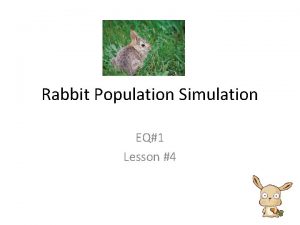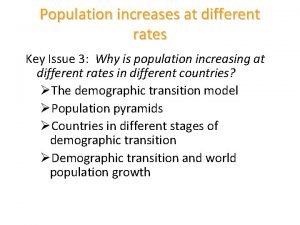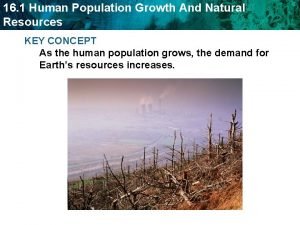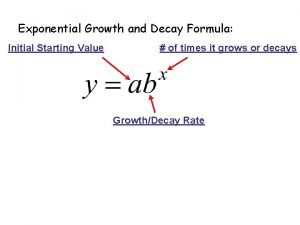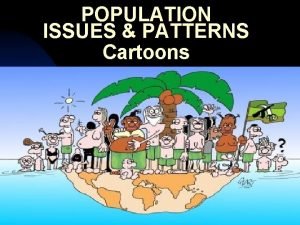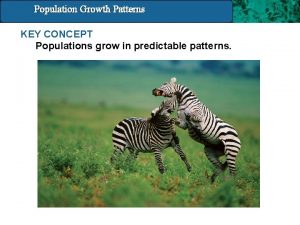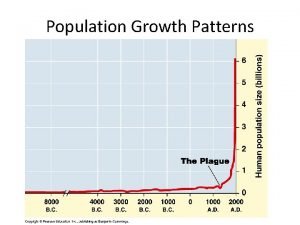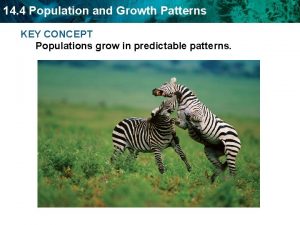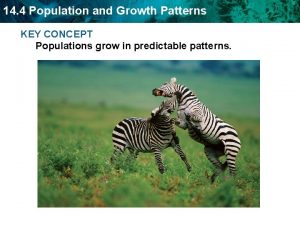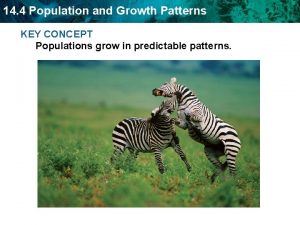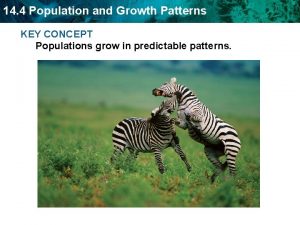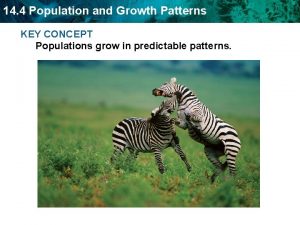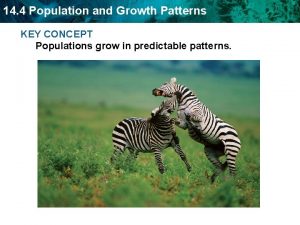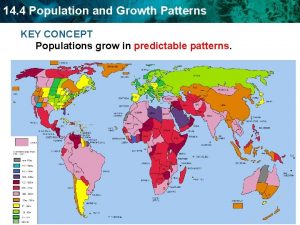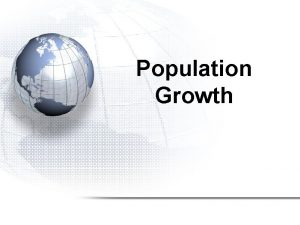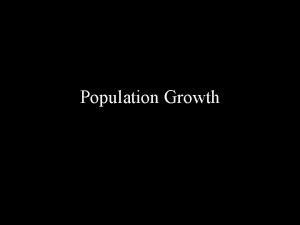14 4 Population and Growth Patterns KEY CONCEPT













- Slides: 13

14. 4 Population and Growth Patterns KEY CONCEPT Populations grow in predictable patterns.

14. 4 Population and Growth Patterns Changes in a population’s size are determined by immigration, births, emigration, and deaths. • The size of a population is always changing. • Four factors affect the size of a population. – immigration – births – emigration – deaths

14. 4 Population and Growth Patterns Population growth is based on available resources. • Exponential growth is a rapid population increase due to an abundance of resources.

14. 4 Population and Growth Patterns • Logistic growth is due to a population facing limited resources.

14. 4 Population and Growth Patterns • Carrying capacity is the maximum number of individuals in a population that the environment can support. • A population crash is a dramatic decline in the size of a population over a short period of time.

14. 4 Population and Growth Patterns Ecological factors limit population growth. • A limiting factor is something that keeps the size of a population down. • Density-dependent limiting factors are affected by the number of individuals in a given area.

14. 4 Population and Growth Patterns • Density-dependent limiting factors are affected by the number of individuals in a given area. – predation – competition – parasitism and disease

14. 4 Population and Growth Patterns • Density-independent limiting factors limit a population’s growth regardless of the density. – unusual weather – natural disasters – human activities

14. 4 Population and Growth Patterns The movement of a single caribou into a herd is called A. B. C. D. Immigration Emigration Population Competition

14. 4 Population and Growth Patterns What pattern of growth will a population with limited resources show? A. B. C. D. Exponential Logistic Density-dependent Density-independent

14. 4 Population and Growth Patterns The carrying capacity is most likely to change A. B. C. D. If emigration take place When resources remain the same For all species at the same time After a fire or flood

14. 4 Population and Growth Patterns Disease may spread more easily when an area is crowded, so disease is considered to be a A. B. C. D. Type 1 survivorship curve Population crasher Density-dependent limiting factor Requirement for logistic growth

14. 4 Population and Growth Patterns Which of the following is an example of a densityindependent limiting factor? A. B. C. D. A parasite A decrease in prey A food shortage A natural disaster
 Whats a density dependent limiting factor
Whats a density dependent limiting factor Chapter 4 section 1 population dynamics
Chapter 4 section 1 population dynamics Section 1 population dynamics
Section 1 population dynamics Population ecology section 1 population dynamics
Population ecology section 1 population dynamics Modeling population growth rabbits answer key
Modeling population growth rabbits answer key Key issue 3 why does population growth vary among regions
Key issue 3 why does population growth vary among regions Natural resources and population growth
Natural resources and population growth Exponential growth and decay formula
Exponential growth and decay formula Plant growth definition
Plant growth definition Primary growth and secondary growth in plants
Primary growth and secondary growth in plants Primary growth and secondary growth in plants
Primary growth and secondary growth in plants Chapter 35 plant structure growth and development
Chapter 35 plant structure growth and development Mining frequent patterns associations and correlations
Mining frequent patterns associations and correlations Population ecology section 1 population dynamics
Population ecology section 1 population dynamics




